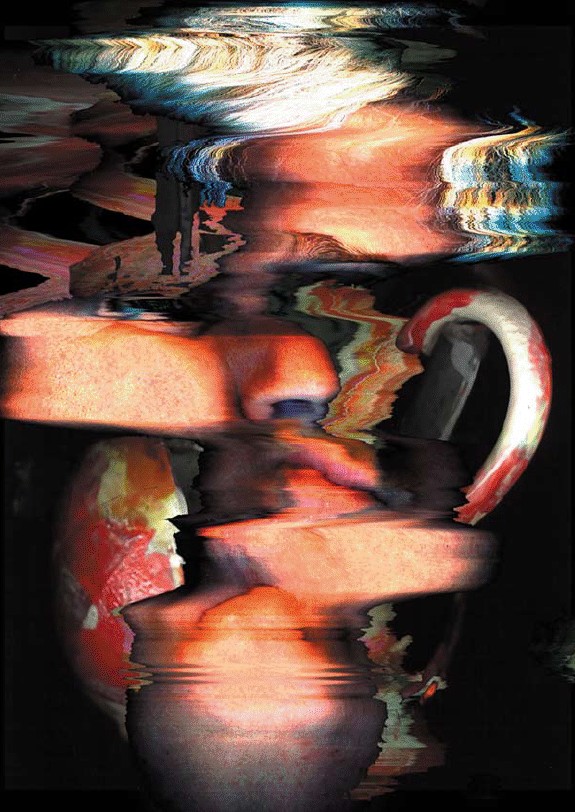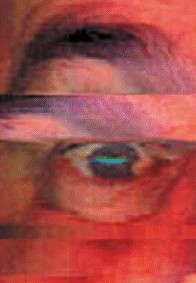- Relief printing
- Intaglio and planographic printing
- Color printing
- Bits and pieces
- Early photography in silver
- Non-silver processes
- Modern photography
- Color notes
- Color photography
- Photography in ink: relief and intaglio printing
- Photography in ink: planographic printing
- Digital processes
- Where do we go from here?
Scanner as camera

Digital scan. Allan Chasanoff. Self-portrait. c. 1990. 1013 x 720 pixels © Allan Chasanoff.
Cameras existed before photography was invented. They used a lens that projected light onto a ground glass, producing a two-dimensional image that could be traced. A pinhole can also project a dim but fairly sharp picture, and natural cameras turn up occasionally using such tiny apertures. The most common one is found in solar eclipses, when every small bit of light coming through the leaves of a tree shows the eroding crescent of the sun. Cameras have used this fundamental structure—of a point projecting a circle of definition onto a flat plane—for the entire history of photography. One of the delights of the computer age is that it has brought us a completely new kind of camera to accompany the old one in our photographic toolbox. We don’t call it a camera but a “scanner,” and it is a new and very exciting method for gathering visual data.

Digital scan. Allan Chasanoff. Self-portrait. c. 1990. 498 x 347 pixels © Allan Chasanoff.
The scanner began as a rotary device that drew a stream of data from a rotating drum onto which a film transparency had been placed. As the drum rotated, the scanner eye moved slowly parallel to the drum’s axis and extracted a spiral thread of tonal information from the transparency. In the first scanners this information was analog, and it controlled an output light that exposed a new piece of film on another drum rotating in sync with the first. By filtering the input light, this system could produce a set of color separations. Between input and output was a set of electronic controls that could tweak the analog flow to control the density of the new film being exposed. These scanners are still around, but are digital now and very expensive. There is also a new, inexpensive, and common device called the desktop flatbed scanner. Here a series of sensors is strung along a linear bar, which passes along the object to be copied in a direction at right angles to its array of sensors.

Detail of Digital scan. Allan Chasanoff. Self-portrait. c. 1990. 498 x 347 pixels © Allan Chasanoff. Since the earliest years of photography, light sources have shown up in miniature reflections in the eyes of the subjects of portraits. In this case the light we see is the long one traveling with the scanner bar. Here we see the evidence of a new, lensless imaging system.
In so doing the scanner records strings of data taken from an area and builds up a picture. The origins of the principle lay in the Xerox machine, which made copies of printed material by passing a drum beneath it. I remember discovering my grade school’s first Xerox—we took great pleasure in scanning unmentionable body parts when no one else was in the office. (Even then this new machine could double as a camera.) The modern desktop scanners are very refined and their sensors can even record quite far away surfaces. They act as multiple-lens cameras, making pictures with a high degree of depth of field over an extended period of time. Even more exciting, the photographs they make are not taken from a single point: the scanning bar moves and sees its subject from more than one location.

